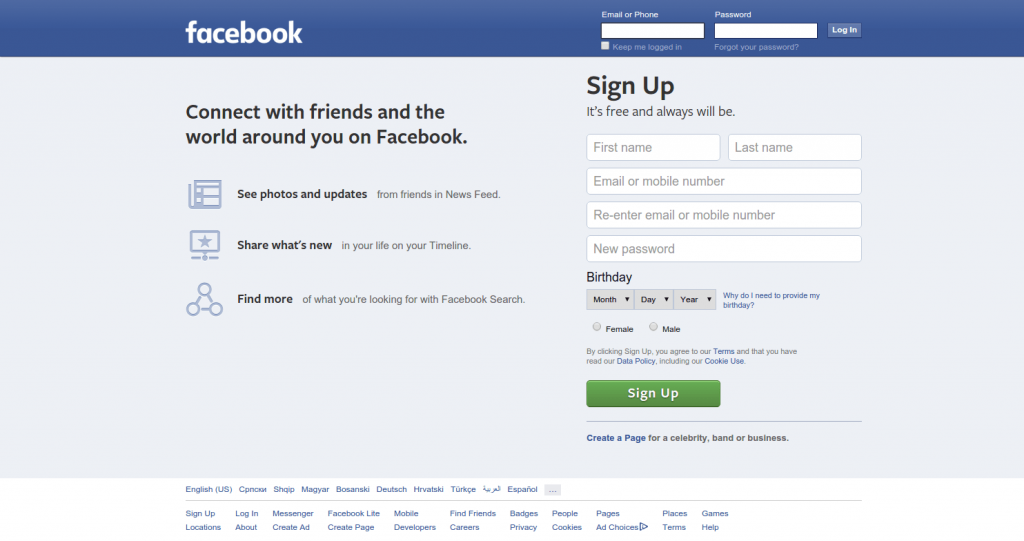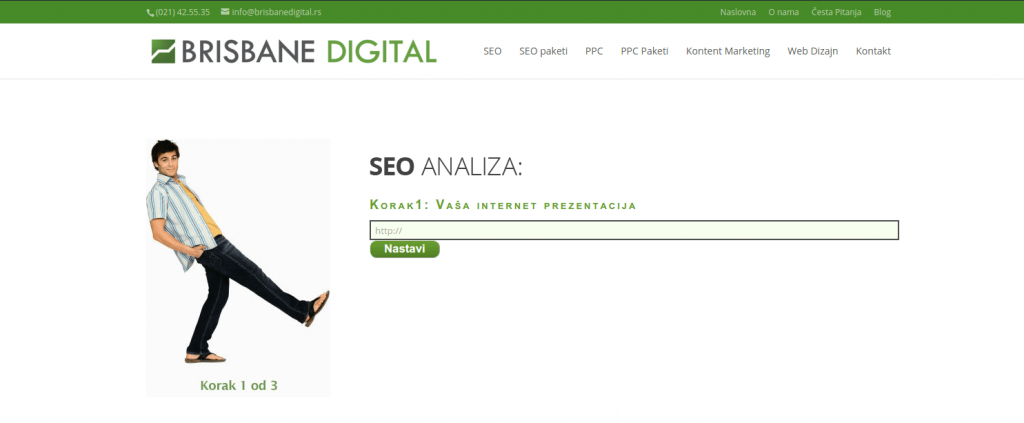The ultimate goal of marketing, including internet marketing, is sales. The activities of a marketing campaign are often aimed at getting as many visitors as possible while neglecting the possibility to increase your conversion rate.
When visiting a site, a potential customer decides to buy, contact, or leave the site within a relatively short period. One way to increase the percentage of site users who have purchased a product (or service) or contacted you is through a “call to action” or “call to action” button.
What is a call to action
“Call to action” is a kind of element that calls a site user to a specific action. For classic business sites, this element can generally be set up for the purpose of purchasing a product or getting in touch with a business, while for blogs and other sites it can be somewhat more diverse (e.g. site registration, newsletter signup, and the like).
Why you should use call to action?
The answer to this question is simple. A good call to action certainly enhances your conversion. Experience has shown that when a call to action is placed, the conversion increases up to several times. You can read one example here.
What’s the secret? Marketing is always about psychology. One button that constantly draws your attention and prompts you to do something (which is why you visited the site) can hardly be ignored.
Call to action is also very important for PPC campaigns. Namely, by increasing the conversion, the call to action reduces the bounce rate, which increases the quality score, which affects the positioning and cost of the PPC campaign.
For the same reason, a call to action may also be relevant to SEO. As you know, the behavior of users on the site significantly affects the ranking of the site on Google, and the fact that the user came to the site, clicked a button, visited another page of the site, and especially if the user fills in a contact form or something, sends a message to Google saying that the user has received what he or she wanted and that the site is relevant to the relevant search.
How does a good call to action look like?
The call to action should be eyecatching, attention grabbing, but clearly different from the spam ads which could provoke quite the undesired reaction. Here are some tips for how a call to action should look:
- – should be noticeable
– should be short (max 5 words)
– start with a verb that defines the action (register; download; call; buy, learn more …)
– Position it well. You must place the call to action in an easily visible place. Ideally, using the crazy egg tool, you can see where your customers make the biggest number of clicks, and position your call to action there.
– should be in a different color than the rest of the site, but has to fit pleasingly (not to look like spam)
– should be as simple as possible, and require as little information as possible from the site users
You won’t be wrong at all if you place a call to action on every page of your site, the only mistake would be if you missed to place it on the page that generates great number of visits. When a user clicks on a call to action, the site should take it to the page that is the purpose of your overall site. This can be a contact page, a form for ordering goods or services, signing up for a newsletter, registering new users and the like.
For example, if your business is such that you do not have a predetermined price for your product or service (let’s say it’s a move and the price depends on the destination). A large number of searches, in this case, will be the keyword (moving, furniture transport, etc.) + prices. A call to action like “find out the price”, “see our price calculator” or “inquire about the price”, which would lead to some tool (price calculator), price list or form with a query about all the necessary information, would be a very good solution. Of course, you would place a call to action on the page that ranks for that keyword.
On the other hand, if you generate a large number of visits through a blog, and say that it is a site of a clinic that receives a great visit through the blog, ideally, in this case, you would have a call to action “schedule an appointment” or better yet. “Consult with Dr. Petar Petrovic” or “Schedule an appointment with Dr. Petar Petrovic”. It would be best if the call to action includes a picture of a doctor. This would give you more authority with readers, especially if Dr. Petrovic is a specialist in the field you are writing about.
Here are some more good examples:
Facebook is a site that many experts take as a good example of a quality call to action. While on the left you can see some of the main features of facebook, on the right is a huge “call to action” that aims to get you to register on their site. All fields are already offered, all you have to do is fill them out. The simplicity, and the fact that you can never miss it, are two qualities of this call to action.

Skype, unlike Facebook, does not have such a great call to action, but it is still quite noticeable, thanks primarily to the choice of colors (marked in green in this example).

In addition to this, there is another call to action on their homepage, in this case, one that calls for a web application (as opposed to the first one that calls for download).

We did it on our site like this:

The reason is simple. Of course, as in the facebook case, it is very noticeable. What makes it different is a photo of a man who steps toward the call. It is highly recommendable to have some extra detail indicating a call to action. It could also be some order that ends with a call to action or a very common case – a man staring at it. In such cases, one has an incentive to at least subconsciously pay attention to the details to which something is directed.
There are limitless examples of this, but following these principles, it can be easy to create a quality call to action and increase conversions.


